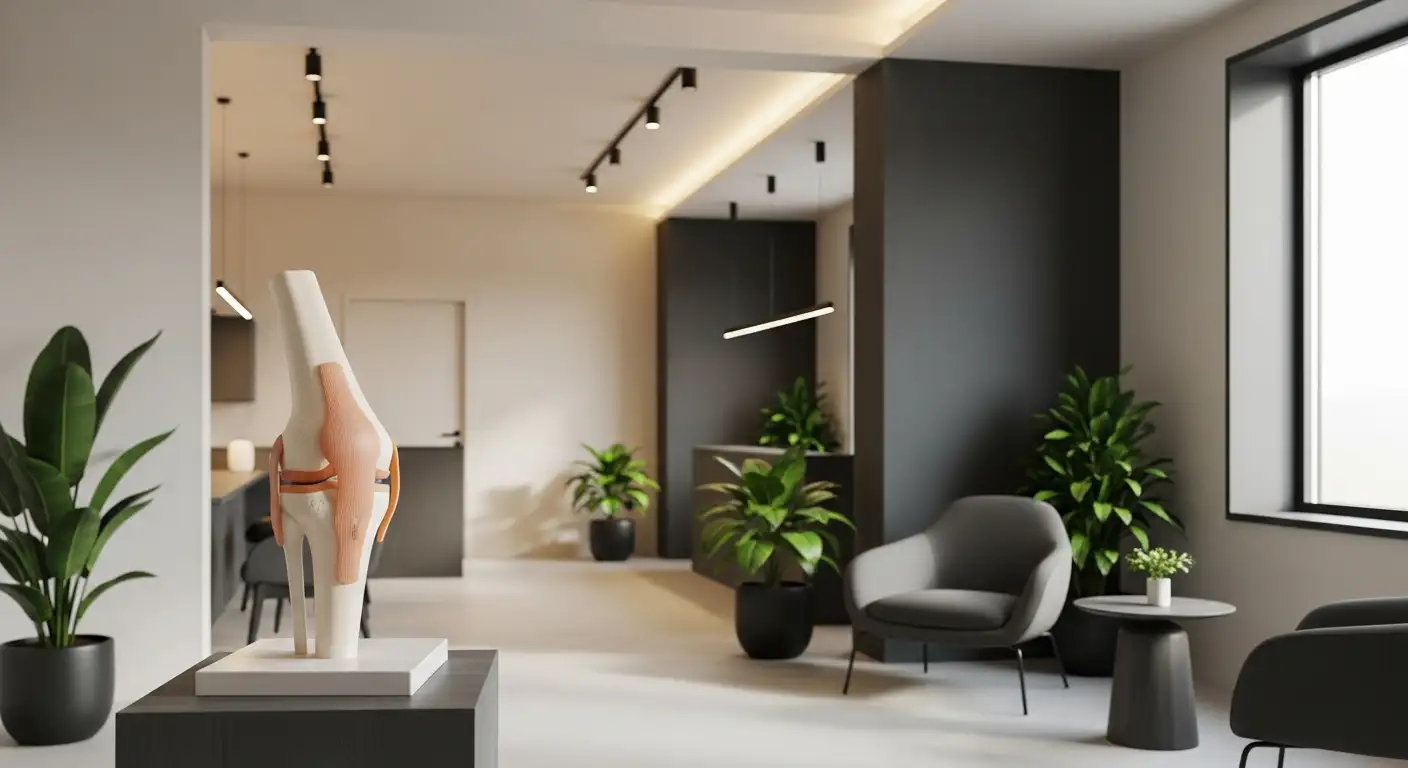Understanding Knee Pain When Jumping
Knee pain when jumping is a common issue that can affect individuals of all ages, especially those who participate in sports or physical activities that involve jumping movements. Understanding the causes, symptoms, and diagnostic options is essential for effective management and treatment.
Causes of Knee Pain
Knee pain when jumping can be caused by several factors. Often, the pain is a result of poor jumping mechanics or inadequate strength and conditioning. Improper jumping techniques, such as landing too hard on the knees or abruptly changing direction in mid-air, can increase the risk of knee pain and injury.

Moreover, repeated jumping can put significant stress on the knees, contributing to the wear and tear of the cartilage, making them more susceptible to pain and injury.
Excess body weight can also exacerbate the impact on the knees when jumping, leading to increased stress and potential pain [2].
Lastly, jumping on surfaces without shock-absorbent properties can increase the pressure on the knees, causing pain and discomfort.
Symptoms and Diagnosis
The symptoms of knee pain when jumping can vary widely, depending on the cause and severity of the condition. Common symptoms may include:
- Sharp or dull pain in the knee joint
- Swelling or inflammation around the knee
- Difficulty in performing jumping movements
- Reduced range of motion in the knee joint
- Pain that worsens when jumping or landing
If you are experiencing knee pain when jumping, it's crucial to consult a healthcare provider for a proper diagnosis. They may perform a physical examination, ask about your medical history, and possibly order imaging tests such as X-rays or MRIs to determine the cause of your knee pain.
Early diagnosis and treatment can help prevent further damage and ensure a faster recovery. Stay mindful of your body's signals and seek medical attention if your knee pain persists or worsens over time.
Importance of Proper Jumping Techniques
Navigating the causes and treatment of knee pain when jumping necessitates an understanding of proper jumping techniques. Incorporating correct jump mechanics and proper landing methods can significantly reduce the risk of knee pain and injury.
Correct Jump Mechanics
Jumping is a complex movement that involves several body parts working together in unison. The technique used during jumping can have a significant impact on the likelihood of experiencing knee pain. For instance, jumping with locked knees can result in an uncomfortable and painful sensation, potentially leading to knee pain.
Improper jumping techniques, such as landing too hard on the knees or abruptly changing direction in mid-air, can increase the risk of knee pain and injury. Conversely, using correct jumping techniques, including bending the knees upon landing, can help prevent knee pain [2].
Importance of Landing Properly
Landing is an integral part of the jumping process, and doing it correctly can help minimize the risk of knee pain. Landing with straight legs when jumping can increase the risk of knee pain and injury due to the lack of shock absorption through the muscles and joints.
On the other hand, jumping with proper technique, including a soft landing with bent knees and controlled movements, can help minimize knee pain and prevent injuries during jumping activities.
Incorrect technique when jumping can lead to injury, such as knee pain, as the knees absorb the impact when landing. The wrong technique can put unnecessary strain on the knees, potentially causing long-term damage and pain [3].
To summarize, applying correct jump mechanics and landing properly are key to preventing knee pain when jumping. It's essential to maintain control during the entire jump and landing process, ensuring the knees are bent upon landing to absorb shock effectively. By doing so, individuals can enjoy jumping activities while minimizing the risk of knee pain.
Role of Exercise in Knee Pain Management
According to Tuscaloosa Orthopedics, engaging in specific exercises to strengthen the muscles around the knee and hip joints can improve jump performance and reduce the risk of knee pain when jumping. This strategy involves performing a combination of strengthening exercises and stretching routines.
Strengthening Exercises
Strengthening exercises play a crucial role in managing knee pain when jumping. They work by enhancing the strength and stability of the muscles surrounding the knees, thus providing better support and reducing the impact on the joints.
Eccentric exercises, for example, have been shown to improve pain, function, and quality of life in individuals with patellar tendinopathy, also known as jumper's knee. These exercises involve slowly lengthening the muscle while it is under tension, which can help to build strength and resilience.
Examples of strengthening exercises include eccentric squats, calf raises, and leg extensions. These exercises help to strengthen the quadriceps and hamstrings, which are key muscle groups involved in jumping movements.
Stretching and Warm-Up Routines
Regular stretching of the quads, hamstrings, and calves can also alleviate knee pain when jumping [5]. Stretching helps to improve flexibility, increase range of motion, and relieve muscle tension, all of which can contribute to pain relief and injury prevention.
Additionally, activities like cycling, swimming, and hydrotherapy can be beneficial for individuals with jumper's knee. These activities provide a cardiovascular workout without putting excessive strain on the joints, allowing for a comprehensive and joint-friendly fitness routine.
Incorporating these exercises and stretching routines into your regular fitness regimen can help to manage and prevent knee pain when jumping. However, it's important to remember that these exercises should be performed under the guidance of a healthcare professional or a trained physical therapist to ensure proper form and to avoid potential injuries.
Role of Equipment and Environment
The equipment used and the environment in which one engages in jumping activities can significantly influence the likelihood of experiencing knee pain. Two crucial factors to consider are the type of footwear worn and the surface on which the jumping takes place.
Choosing the Right Footwear
Choosing the right footwear is crucial in preventing knee pain when jumping. The correct shoes can provide the necessary support to the feet and knees, reducing the strain on these areas during jumping activities. They can also help absorb some of the impacts when landing, thereby minimizing the stress on the knees.
Several factors to consider when selecting footwear for jumping activities include:
- Proper fit: Shoes should fit comfortably, not too tight or too loose.
- Adequate cushioning: Look for shoes that offer good shock absorption to reduce impact on the knees.
- Support: Shoes should provide good arch and ankle support.
- Quality: Choose well-made shoes that can withstand the impact of jumping.
Always try on shoes before purchasing, and if possible, perform a few jumps to assess comfort and support.
Impact of Jumping Surfaces
The surface on which one jumps also contributes to knee pain. Jumping on surfaces with more shock-absorbent properties, like rubber or specialized athletic flooring, can help reduce the impact on the knees and alleviate knee pain during jumping activities.
Conversely, jumping on hard surfaces such as concrete can increase the risk of knee injuries due to the high-impact nature of these materials. When possible, choose to jump on softer, more forgiving surfaces.
Furthermore, always remember to practice proper jumping techniques, including a soft landing with bent knees and controlled movements, as such methods can help minimize knee pain and prevent injuries during jumping activities.
In conclusion, the choice of equipment and the environment in which one jumps play a crucial role in managing and preventing knee pain when jumping. By making mindful decisions about footwear and jumping surfaces, one can enjoy jumping activities while minimizing potential knee discomfort.
Consultation and Medical Treatment Options
In managing knee pain when jumping, it's important to consider professional consultation and potential medical treatment options. This section will cover when to consult a healthcare provider and what medical treatments may be available.
When to Consult a Healthcare Provider
Consulting with a healthcare provider is vital if one experiences persistent knee pain when jumping. Orthopedic specialists or physical therapists can help determine the underlying cause and provide appropriate treatment and rehabilitation.
Furthermore, it is recommended to consult with a healthcare provider before starting any new exercise program to ensure proper guidance and to assess individual needs [4].
Early intervention is crucial, so it's essential to seek professional help if knee pain while jumping persists or worsens. Early intervention can often prevent the condition from progressing to a more severe state.
Finally, care should be taken before starting exercises for jumper's knee. It is essential to consult a physiotherapist or healthcare provider to ensure they are suitable for individual conditions [5].
Medical Treatments for Knee Pain
Medical treatments for knee pain when jumping can vary depending on the severity of the condition and individual needs. These can range from conservative treatments such as rest, ice, compression, and elevation (RICE), to more advanced interventions such as physical therapy, medication, or even surgery.
It's also crucial to remember that any individual experiencing knee pain when jumping should consult with a healthcare professional or fitness expert. This will help identify the underlying cause and receive appropriate treatment to prevent further injury [3].
When considering medical treatment options, it's essential to discuss all potential risks and benefits with a healthcare provider. This will help ensure the best outcome and help individuals get back to their favorite activities, free of knee pain.
Prevention of Knee Pain When Jumping
When it comes to managing knee pain when jumping, prevention is often the best strategy. This involves maintaining a healthy weight and ensuring regular physical activity and conditioning.
Importance of Weight Management
Maintaining a healthy weight is crucial in preventing knee pain related to jumping activities. Excess body weight can exacerbate the impact on the knees when jumping, leading to increased stress and potential pain. It's important to note that jumping repeatedly can put significant stress on the knees and can lead to knee pain. This type of activity can contribute to the wear and tear of the cartilage in the knees, making them more susceptible to pain and injury [2].
Therefore, a balanced diet and regular exercise are essential for weight management. If you're struggling with weight loss, consider seeking help from a dietitian or health professional who can provide personalized advice and a suitable plan.
Regular Physical Activity and Conditioning
Regular physical activity and conditioning can help prevent knee pain when jumping. Engaging in exercises that strengthen the muscles around the knee, such as the quadriceps and hamstrings, can provide better knee stability and protection. These exercises can include activities like squats, lunges, and leg presses.
Moreover, it's not just about strengthening. Flexibility exercises and proper warm-up routines before jumping activities are also crucial to maintain the health of your knees. Stretching helps to increase the range of motion of the joints and muscles, which can help to prevent injuries and discomfort.
In case of persistent knee pain when jumping, it is recommended to consult a healthcare professional or fitness expert. They can identify the underlying cause and provide appropriate treatment to prevent further injury.
In conclusion, prevention of knee pain when jumping involves a combination of weight management and regular physical activity. By taking proactive steps, you can continue to enjoy jumping activities without the discomfort of knee pain.
References
[2]: https://www.webmd.com/osteoarthritis/features/6-ways-to-ruin-your-knees
[3]: https://fatchfitness.com/jumping-technique-and-injury/
[4]: https://theprehabguys.com/jumpers-knee-exercises/
[5]: https://www.surreyphysio.co.uk/top-5/best-5-exercises-jumpers-knee/
[6]: https://www.hingehealth.com/resources/articles/jumpers-knee/




